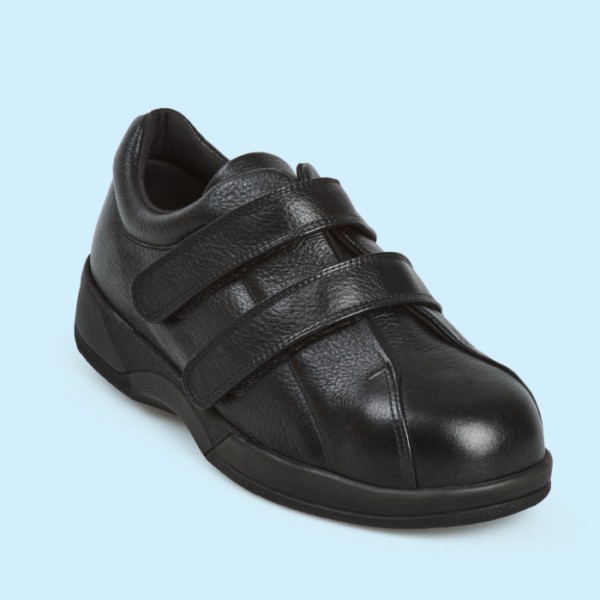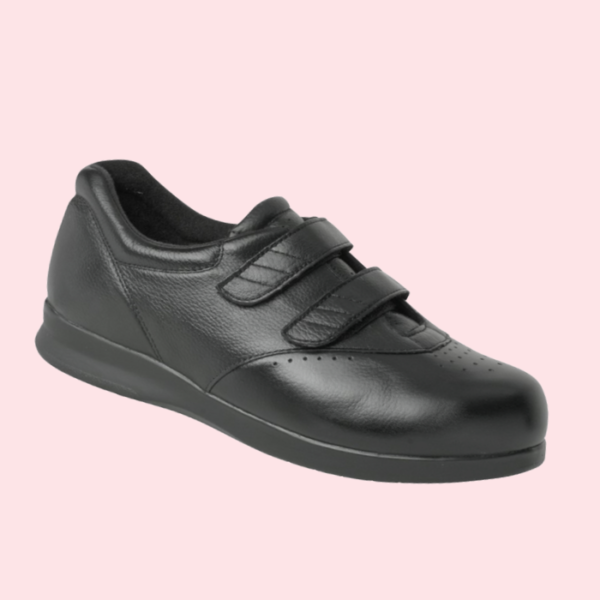Keep Moving and Stay Fit with Shoes for Cuboid Syndrome
Cuboid Syndrome is the term that causes trouble for runners, sportsmen and athletes. The cause may be sudden excessive pressure on the specific foot area. The foot specialist may suggest stretching, icing and wearing shoes for cuboid syndrome to recover from cuboid injury.
 Symptoms of Cuboid Syndrome
Symptoms of Cuboid Syndrome
One of the 28 bones of the foot is the cuboid bone. It is one of the seven tarsal bones of the foot. Its function as a component of the calcaneocuboid joint is to aid in the maintenance of foot mobility when moving. So, your cuboid plays an important role when you walk or run.
Around one in twenty people is a victim of cuboid pain, which could be that your cuboid is jostling around when you move. Your cuboid can get stuck and readjust in the wrong position. This could lead to jamming and outside of the arch pain. So the way cuboid syndrome feels is along the outside of the foot; the result could be foot soring, achiness or redness.
What exactly causes cuboid syndrome?
The following are the most prevalent causes of the cuboid syndrome:
Acute injury
An ankle sprain is a common cause of the cuboid syndrome. The lower leg injury results in a damaged cuboid.
Repetitive Strain
Running, leaping, and any activity that requires running, such as tennis, soccer, or football, are examples of activities that produce repeated strain/overuse. Ballet dancers, according to research, are also at risk of acquiring cuboid syndrome.
Foot mechanics
A person having a flat fleet is likely to be a victim of the cuboid syndrome as a collapsed arch cause more pressure underneath the foot side. The research shows that majority of patients with cuboid injury have pronated feet. Supinated feet are the second most cause.
Excessive BMI
People who are obese are also likely to develop cuboid bone problems
Ill-Fitting Shoes
If you tend to wear ill-fitting shoes, there is a chance that you could have a cuboid injury.
Chronic Cuboid Pain
You will observe a lack of flexibility in your ankle and feel stiffer. Walking with the leg turned out to the side to take pressure off the cuboid on the outside is a clear symptom of the cuboid. You could experience partial subluxation, a potential cause of chronic cuboid pain. In case the ligaments surrounding the cuboid bone upside or bottom become loose or torn, there is a great chance of a pop-out place. With such a condition, when you walk, the cuboid bone will not rub as it should, and this term is known as cuboid subluxation. That could happen when you land your foot flat.
Who Can Diagnosis Cuboid Injury?
A Podiatrist is a person who can check and treat the cuboid injury with medication or footwear. A podiatrist can recommend shoes for cuboid syndrome so that you can walk comfortably. The cuboid injury expert can ask for:
- X-rays
- Ultrasound
- MRI
- CT Scan
A podiatrist can help manipulate your foot and show you how to do all these things because there are chances that it might not be a cuboid sprain. It might be a stress fracture, or it might be something else. Get checked out if you’re worried.
Physical Exercise to Do during Cuboid Injury
Your Podiatrist may ask to do some exercise to reduce foot inflammation. Typically, it may involve using a frozen plastic water bottle to roll on the bottom of your foot firmly or picking a towel with your toe. This is to massage your plantar fascia, the ligaments and muscles around the cuboid bone. Such exercise could last for five to ten minutes. This way, you are massing and icing your cuboid bone.
Shoes for Cuboid Syndrome Treatment
Podiatrists recommend wearing special shoes for cuboid syndrome treatment. Foot specialists recommend avoiding flexible shoes. Instead, they provide excellent support with shoe inserts and insoles.
Some people may misdiagnose cuboid syndrome by taking it for more common foot injuries, i.e. ankle injury, plantar fasciitis and ankle sprains.
Cuboid injuries are frequent among those who are active and participate in high-risk hobbies such as running, leaping, or ballet. Cuboid syndrome, however, can be addressed with a combination of at-home treatment, physiotherapy, and foot accessories like custom foot orthotics and taping. The latter two of which can be done as part of a foot examination by a chiropodist. In reality, once correctly diagnosed, this illness is readily treated and avoided.
Best Arch Support Insoles
In case you feel ankle pain, MediComf stocks a wide range of orthotics, insoles and inserts. We have a team of specialists who can help you locate and buy the right product that matches your requirements.
Chiropodists can help people with the cuboid syndrome in the following ways:
- Diagnosing any underlying biomechanical difficulties causing your discomfort and prescribing foot devices, such as custom orthotics, to assist correct any gait abnormalities and realigning your foot (more on that below!)
- Advising on supportive footwear that is appropriate for your foot type and stride.
- Prescription of foot exercises and stretches to aid rehabilitation and maintain total foot health.
- Taping with the objective of stabilising the medial longitudinal arch can be beneficial.
- Padding to support the plantar cuboid may aid in foot support.
Custom Orthotics
To get freedom from foot pain, you must choose all possible ways that are more than simply doctoral treatments. We use our feet constantly, so they must be adequately supported during all of our activities. This is where custom orthotics come in!
Custom orthotics are corrective shoe inserts that are handcrafted to offer tailored support to the structures of our feet. Orthotics enhance your gait and manage discomfort by correcting or accommodating biomechanical irregularities, foot deformities (such as bunions, hammertoes, flatfoot, and high arches), and a range of joint and muscle disorders, i.e. arthritis. They do this by dispersing the tension and pressure that our muscles and joints experience as we move. This, in turn, relieves tension and discomfort in our feet and throughout our bodies.













